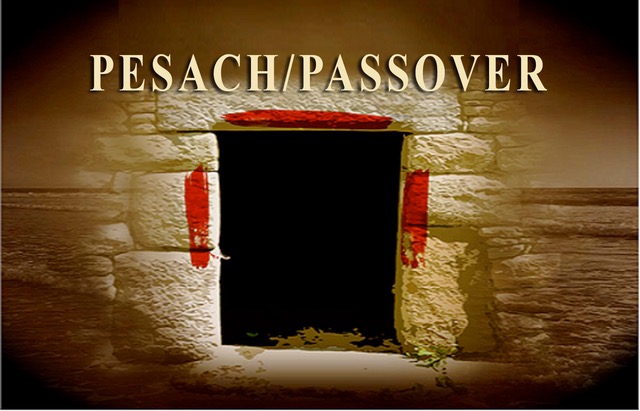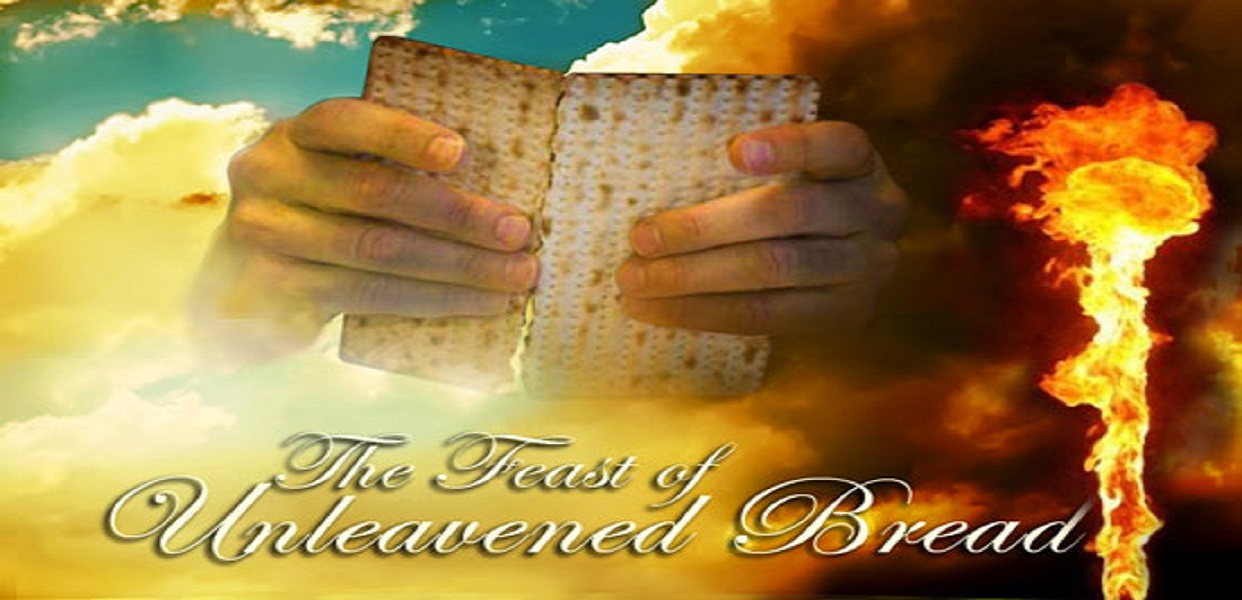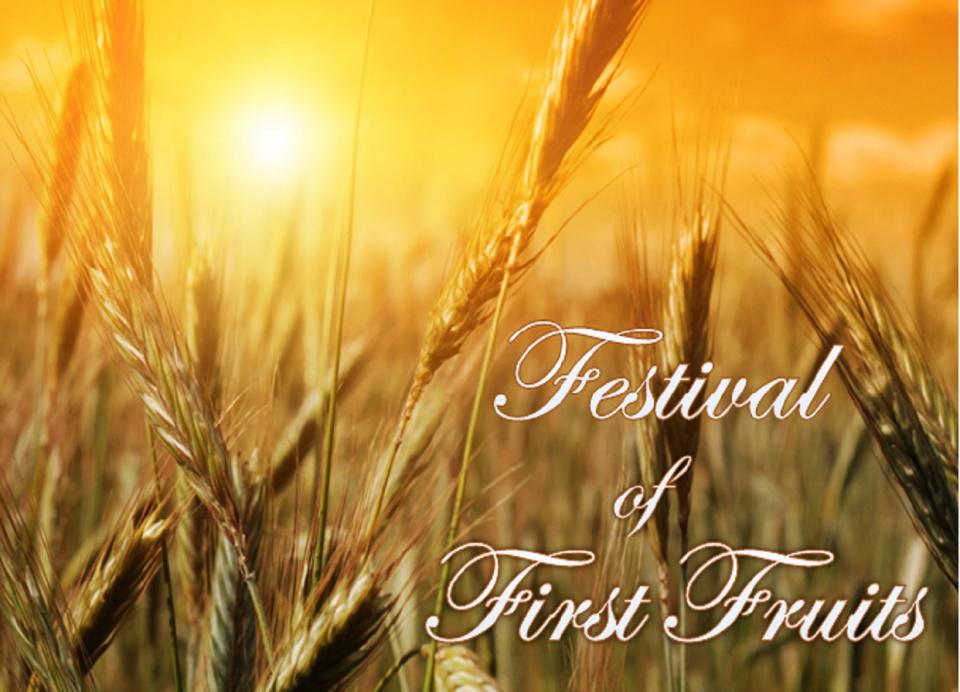The Purpose
Pesach (Passover) is the first of the seven feasts of the
LORD that GOD proclaimed holy and ordained the children of
Israel to observe forever(Leviticus 23:4-5; Numbers 9:2-3;
Exodus 12:14). It is a festival of deliverancefrom physical
and spiritual bondage. Pesach (Passover) carries a powerful
message for today. It is foundational to our understanding of
the LORD’s Supper, the Upper Room and even the MESSIAH’s
death.
The Time
Pesach is a one-day feast, immediately followed by the
seven-day Feast of Unlevened Bread. The two feast are
typically blended together and simply called Pesach
(Passover). GOD ordained that Pesach be observed each
year on the 14th day of Nisan (March/April). So awesome
was GOD’s deliverance that HE altered Israel’s religious
calendar to reflect the month of Nisan as the new beginning
(first month) of their religious year.
The History
Pesach celebrates the deliverance and mass exodus of over
2 million Hebrews and mixed multitude from the tyranny of
Egypt. Through HIS servant Moses, GOD displayed many
miraculous signs proving HIMSELF in the eyes of the
children of Israel and all Egypt, to be GOD Almighty.
Confronting Pharaoh and all his mystics, HE openly revealed
neither they nor their false gods, in whom they had placed
their confidence, had any power at all. HE made it clear that
it was HE, and HE alone, who was and is the ONE true and
Almighty GOD, Creator and sustainer of all life and
everything that exists! It was the final plague in which death
in a single night, entered into the homes of all the
unbelieving throughout the land claiming the life of the
firstborn, that set the nation free. Miraculously, death
“passed over” (Pesach) the homes of all those who believed,
and had followed GOD’s instructions. It was by their
obedience and the sacrifice of the Pesach (Passover) lamb,
that GOD HIMSELF stood between them and death,
preserving the lives of HIS people and redeeming them from
destruction.
The Elements
They were instructed to keep Pesach annually as a memorial
of their deliverance throughout all their generations (Exodus
12:25). Three of the key elements to be eaten during this
time are: Lamb, representing the sacrifice of their
deliverance; Matzah or unleavened bread representing the
sinlessness of the sacrifice and Bitter herbs reminding them
of the suffering of they endured during their time of
bondage. Another integral facet of the Pesach service or
Seder (Order) as it’s called, is the retelling of the miraculous
story commemorating GOD’s great deliverance of HIS
people.
The Spiritual Focus
The Seder is rich with symbolism of GOD’s complete
redemptive plan for all mankind. Ultimately, it
foreshadowed YESHUA HaMASHIACH (JESUS CHRIST) as
our Pesach (Passover) Lamb. The prophet Isaiah spoke of
the coming Messiah as an innocent, pure lamb upon whom
the Sin of the world would fall in place of the people. He
would be the One who, with great bitterness of suffering and
death, would shed His blood to provide the greater
deliverance for all from the bondage of sin. Apostle Paul
also described YESHUA (JESUS) as our Passover instructing
us to keep this feast in sincerity and truth (I Corinthians
5:7-8).
The Purpose
The Feast of Unleavened Bread is a reminder
of GOD’s miraculous deliverance of the children of Israel
from Egyptian bondage. The second of the seven biblical
feast is Hag Hamatzot, named after the bread required to be
eaten during this time which is Matzah or “unleavened
bread”. It recalls when the Hebrews fled from Egypt during
the night of deliverence, there was not even enough time for
their bread dough to rise. So, this seven-day feast in which
unleavened bread is eaten commemorates the haste in
which they left Egypt in freedom.
The Time
This Festival is observed in the month of Nisan (March-
April). It begins on the 15th of Nisan and lasts for seven
days. Since it immediately follows the Feast of Pesach
(Passover), the two are often blended together and simply
referred to as the feast of Pesach.
The History
GOD established both Pesach and the Feast of Hag
Hamatzot (Unleavened Bread) prior to the other feasts of
Leviticus 23 (Exodus 12:14-20). This is one of three annual
pilgrimage feasts (Unleavened Bread, Shavuot (Weeks) and
Sukkot (Tabernacles), in which GOD required all Jewish men
to present themselves before HIM in Jerusalem.
The Elements
Hametz, or leaven, literally means, “sour.” Leaven (yeast or
baking powder) is used to produce fermentation in bread
dough and cause it to rise. During this festival, not only is
leavened bread not to be eaten, but, all leaven has to be
removed from the home entirely.
The Spiritual Focus
Quite often, sin is depicted in scripture as “leaven” (Matt
16:6,11; Mark 8:15; Luke 12:1; Gal 5:9). The Feast of
Unleavened Bread is a time to allow the Light of GOD’s Word
and Holy Spirit to remove those traces of sin that still remain
or have crept back into our lives. It is a time to focus on
laying aside even the tiniest of sins that would eventually
weigh us down, hindering us from being all that GOD would
have us to be
The Purpose
Firstfruits or Sfirat Haomer (Counting of the Sheaf or Omer)
signaled the ripening of barley grain in Israel. Barley was the
first grain ready for harvest after the winter planting.
Firstfruits, like the principle of the firstborn, (either man or
beast) belong to GOD. A firstfruits is a time of looking
forward with anticipation for what is yet to come. For the
sheaf of barley represented the whole harvest to come. It
served as a pledge to the faithfulness of GOD.
The Time
Firstfruits is the 16th day of Nisan (March-April) and is
considered a Sabbath as well among the feasts of Passover
and Unleavened Bread.
The History
An elaborate ceremony consisted of lifting the sheaf of grain
high in the air and waving it before the LORD and
acknowledging HIS blessings. There was an elaborate
processional into the Temple filled with music and singing
and dancing. Firstfruits is also a time marker, as a “count-up”
to the Feast of Weeks or Shavuot (Pentecost). Beginning
with Firstfruits, forty-nine days were counted and on the
fiftieth day, Shavuot was celebrated.
The Spiritual Focus
Firstfruits, contains a powerful depiction of the resurrection
of Messiah. It speaks of a bountiful harvest – the grain of
wheat that fell to the ground and died, but rose to produce a
great harvest (John 12:23-24). YESHUA, was raised on the
third day of Pesach (16 Nissan) to become the firstfruits of
all those who die trusting in HIM for their resurrection. As
declared in I Corinthians 15:20: “But the fact is that the
Messiah has been raised from the dead, the firstfruits of
those who have died.” YESHUA’s resurrection is the
guarantee or pledge of that final great harvest!
The Purpose
Shavuot is a time to thank YHVH (GOD) for HIS physical
provision by bringing HIM the firstfruits of the wheat harvest.
It is also a celebration of the Torah or the revelation of
YHVH’s Word. It was during Shavuot that YHVH (GOD) gave
HIS people the Torah at Mt.Sinai. This is also a time to
celebrate the HOLY SPIRIT. It was during this time that the
HOLY SPIRIT was poured out on the early believers. This is
one of three feasts that YHVH (GOD) decreed that all
Israelite men were to present themselves at the Temple in
Jerusalem to meet with HIM.
The Time
Shavuot is observed in the late spring, the sixth day of the
month of Sivan (May or early June), which is fifty days from
the Feast of Firstfruits (Lev. 23:15-16; Dt 16:9-10). The fifty
days between The Feast of Firstfruits and Shavuot is
referred to as “The Counting of the Omer”(Hebrew for
measure or sheaf)
The History
Shavuot is also known by several other names throughout
the Scriptures. It is called “The Feast of Weeks” (Ex. 34:22;
Dt. 16:10; 2 Chr. 8:13), because seven weeks are counted
from The Feast of Firstfruits until Shavuot. It is also referred
to as “The Day of Firstfruits” (Num. 28:26) since Shavuot is
the day that the firstfruit offerings of the summer harvest are
presented. The outpouring of the HOLY SPIRIT commonly
known as Pentecost, like the giving of the Torah, occurred
during the season of Shavuot (Acts 2).
The Food
It is a widespread practice to eat milk and honey during
Shavuot as a reminder of the Torah, since the word of YHVH
is like milk and honey to the soul. Enjoying cheesecakes and
other cheese filled pastries are common during this time. It
is also customary to bake two loaves of challah on Shavuot
to represent the two loaves offered in the Temple and the
two tablets of the Torah received by Moses on Mt. Sinai.
The Spiritual Focus
It was during Shavuot, after Yeshua’s death, resurrection and
ascension, that the disciples experienced the outpouring of
the HOLY SPIRIT (Acts 2). The sound of a powerful wind and
the tongues of fire would have been reminiscent of what the
Israelites experienced at Mt. Sinai when YHVH made HIS
covenant with HIS people (Ex.19: 16-20). The sound of the
holy utterance got the attention of the crowds that had come
to Jerusalem to celebrate Shavuot. After Peter shared about
how YESHUA fulfilled the prophecies of the Scriptures, he
urged them all to repent and some 3,000 trusted in the Lord
and were saved.




